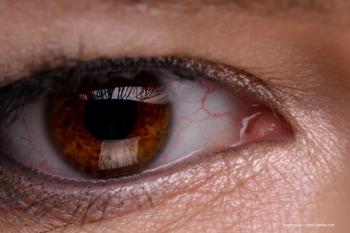
Understanding etiology crucial for appropriate uveitic treatment
Punctate inner choroidopathy (PIC) and multifocal choroidopathy (MFC) with panuveitis are different conditions and not part of a spectrum of the same disease.
Considering them as separate entities is important for optimizing further research aiming to elucidate the pathophysiology and etiology of PIC and MFC, said Debra A. Goldstein, MD.
“PIC and MFC may appear similar on imaging, but similarity in phenotype does not equate to similar etiology,” said Dr. Goldstein, noting that while chest x-rays from patients with sarcoidosis and tuberculosis may be indistinguishable, the etiology of the pathologic changes is clearly not the same.
“Currently, PIC is considered idiopathic,” said Dr. Goldstein, who is Magerstadt Professor of Ophthalmology and Director of the Uveitis Service, Northwestern University Feinberg School of Medicine, Chicago.
“MFC, which is not one condition but a term describing a group of inflammatory conditions, is sometimes idiopathic but specific etiologies have been identified,” Dr. Goldstein said. “Lumping together PIC and MFC because of their similar phenotypes may hamper our ability to further understand the etiology, pathophysiology, and best management of these conditions.”
Clinical differences
Comparing and contrasting PIC and MFC, she said that PIC and MFC differ in several clinical features. PIC is a non-inflammatory condition that is not associated with vasculitis, vitritis, anterior chamber cells, or cystoid macular edema (CME).
Furthermore, and in spite of its name, PIC lesions, which are located only in the posterior pole, involve primarily outer retina and perhaps choriocapillaris, not the deeper choroid, and the most common cause of decreased vision in patients with PIC is subretinal neovascularization.
MFC represents a group of inflammatory conditions in which anterior uveitis, vitritis, vasculitis, and CME can be present.
In addition, there are choroidal lesions that may be located in the posterior pole or peripherally. CME is the most common cause of visual loss in patients with MFC, although affected patients may also have subretinal neovascular membranes causing decreased vision.
Elucidating etiologies
The etiology of MFC may be idiopathic, but it can also develop in association with certain systemic diseases, including tuberculosis, sarcoidosis, and Blau syndrome. Whereas PIC is now considered idiopathic, it is not unrealistic to expect that underlying genetic, infectious, or molecular causes may be uncovered in the future through research advances, including the application of genomic sequencing.
Likewise, additional disease associations for MFC may exist, Dr. Goldstein proposed.
“Underlying etiologies for PIC and MFC may be missed if the two phenotypes are considered as one,” she said.
Understanding etiology is important for identifying appropriate treatment.
“We know that MFC can be associated with tuberculosis, sarcoidosis, and Blau syndrome. Obviously, our treatment is very different depending on the etiology,” Dr. Goldstein said.
Further illustrating her point, Dr. Goldstein presented the case of a patient with MFC that was diagnosed as idiopathic and worsened following initiation of immunosuppressive therapy.
“The patient did not receive an appropriate work-up for MFC until after the condition worsened, and then it was discovered that the MFC was secondary to tuberculosis,” she said.
Newsletter
Keep your retina practice on the forefront—subscribe for expert analysis and emerging trends in retinal disease management.
















































